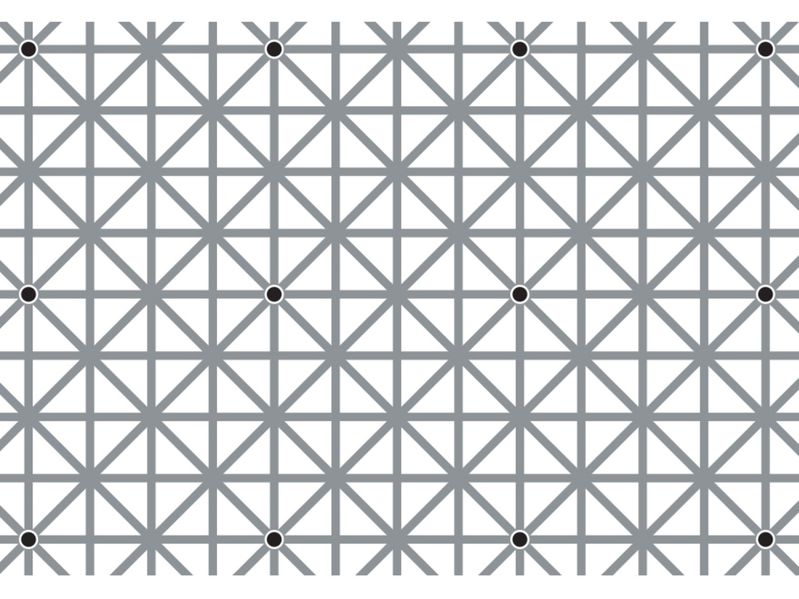
Your brain won’t let you see all 12 dots in this image
Twelve black dots dance in the photo's grid. They never actually move or vanish, but no matter how fast you twitch your eyes back and forth, you can’t seem to trap them all in your gaze at once.
Ninio's extinction illusion is a riff on the Hermann grid, a classic piece of visual trickery in which your eyes see illusory gray blobs at the intersections of a black-and-white lattice. We don't know exactly why the Hermann grid happens. This makes it challenging to sort out the brain science behind any modifications on the original illusion.
Researchers' prevailing theory for the flickering-dots variant above is that we have more neurons clustered at the center of our vision than the outside. The lack of cells in our periphery renders us nearly blind to things far enough outside the center. To compensate, the brain takes its best guess at what's out there based on the more-visible gray areas. This makes a dot seem solid when we're looking right at it but invisible when viewed with a sideways glance.
So, when our eyes dart around the entire scene, the black dots move into and out of our visual field, making them seem as if they are flickering on and off.
Regular patterns are tempting because you can look at a small portion and think you have the whole thing figured out. Don’t fret—we get by just fine without seeing everything.
 English
English Arabic
Arabic
